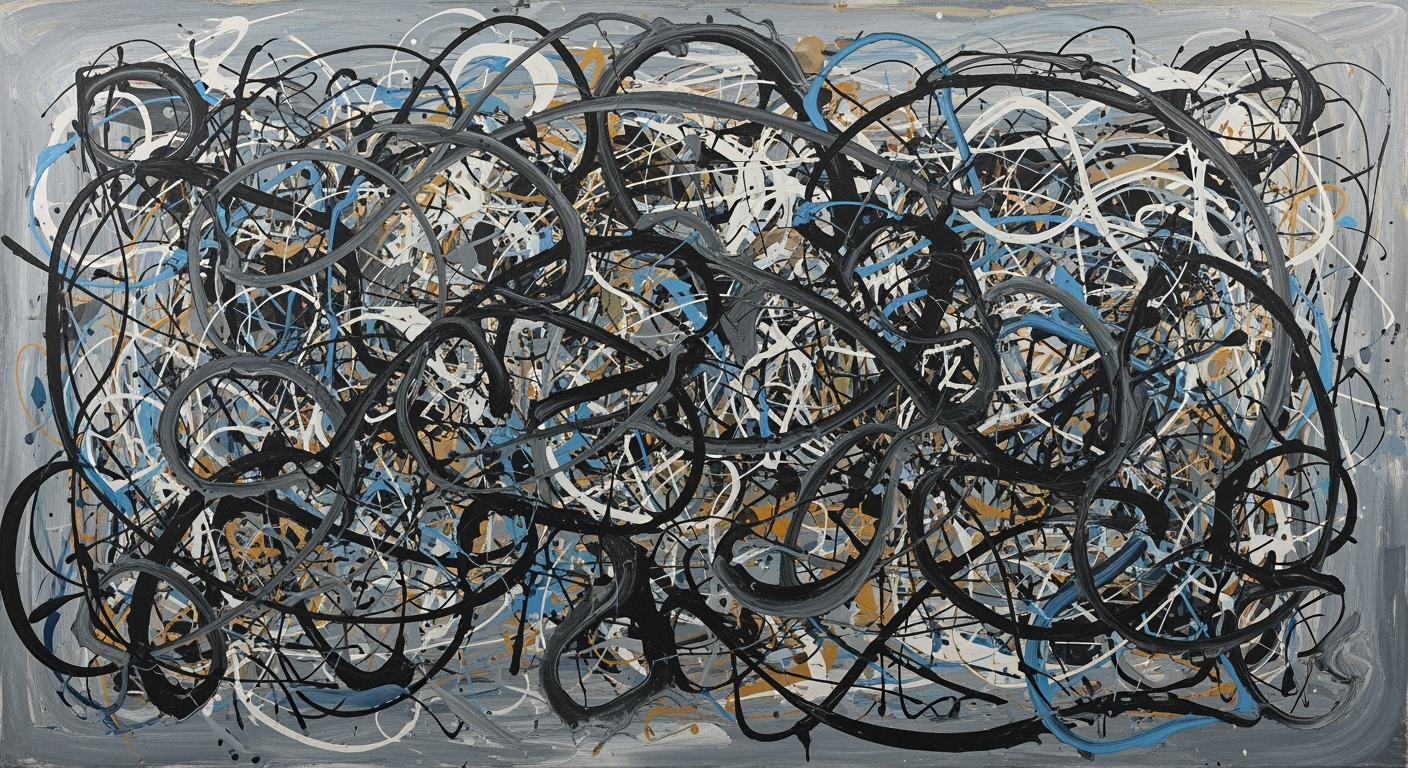Airbnb Seasonality Model in Excel: A 2025 Guide
Learn to model Airbnb seasonality using Excel. Explore occupancy rates, pricing, and market trends in 2025.
Introduction to Airbnb Seasonality Modeling
In the rapidly evolving landscape of short-term rentals, understanding the seasonality of Airbnb bookings has become crucial for optimizing property management strategies. Seasonality refers to the predictable fluctuations in demand based on the time of year, which can significantly impact both occupancy rates and pricing. As we approach 2025, the dynamics of the Airbnb market are poised to shift, making accurate seasonality modeling more important than ever.
Excel remains a powerful tool for creating detailed seasonality models, allowing hosts to visualize trends and adjust their strategies accordingly. With statistical analysis and pivot tables, Excel facilitates the tracking of occupancy rate fluctuations, pricing adjustments, and shifting guest behaviors throughout the year. For instance, data from 2023 showed that urban Airbnb listings experienced an average occupancy increase of 15% during the holiday season compared to the off-season. This highlights the necessity of adapting pricing strategies to capitalize on peak demand periods.
To stay ahead in this competitive market, hosts should employ actionable frameworks that consider these seasonality patterns. By integrating historical data trends with projections for emerging market dynamics in 2025, hosts can effectively leverage Excel models to maximize their revenue. Embracing this analytical approach not only helps in setting competitive prices but also in enhancing guest satisfaction through better availability management. Thus, seasonality modeling is not just a predictive exercise but a strategic imperative for forward-thinking Airbnb hosts.
Understanding Seasonality in Airbnb
Seasonality plays a crucial role in the dynamics of Airbnb, influencing occupancy rates and pricing strategies. Traditional forecasting methods, such as time-series analysis, have been instrumental in anticipating these fluctuations by examining historical data trends. These methods focus on recognizing patterns and projecting future performance based on past behaviors. However, the evolving dynamics of the travel market require a more nuanced approach.
One of the key aspects of understanding Airbnb seasonality is the fluctuation in occupancy rates. For instance, a beachfront property might see occupancy peak at 90% during summer months, while experiencing a dip to just 30% in winter. This variation necessitates strategic pricing adjustments to optimize revenue. Hosts often increase prices during high-demand periods to maximize profits and offer discounts during off-peak seasons to attract bookings. A well-considered pricing strategy, informed by occupancy trends, can significantly enhance a property's profitability.
Emerging market dynamics further complicate the seasonal landscape. Factors such as global travel trends, economic shifts, and even local events can impact guest behaviors and preferences. For example, the rise in remote work culture has allowed travelers more flexibility, leading to an increase in mid-week bookings and extended stays. As such, hosts must remain agile, continuously updating their models to reflect these changing conditions.
To effectively model Airbnb seasonality using Excel for 2025, hosts should embrace both traditional forecasting methods and insights into emerging market trends. By combining historical occupancy data with forward-looking market dynamics, they can develop more accurate and actionable projections. For instance, integrating conditional formatting in Excel can highlight peak and trough periods, allowing hosts to visualize and adjust their strategies proactively.
Ultimately, understanding and adapting to Airbnb's seasonal patterns not only helps hosts maintain competitive pricing but also enhances guest satisfaction by aligning offerings with market demand. By leveraging these insights, hosts can optimize their financial outcomes while delivering exceptional experiences year-round.
Building the Seasonality Model in Excel
In the dynamic world of Airbnb, understanding seasonality is crucial to maximizing revenue and ensuring long-term profitability. Crafting an Excel-based seasonality model requires a structured approach to accommodate the fluctuating nature of occupancy rates, average daily rates (ADR), and guest behaviors. Below, we walk you through the process of creating a comprehensive seasonality model that addresses peak efficiencies, monthly variations, and quarterly adjustments, while also calculating break-even occupancy rates.
Step 1: Establish Maximum Occupancy Rates for Peak Seasons
The first step in building your seasonality model is defining the maximum occupancy rates for peak seasons. This involves analyzing historical data to determine the highest achievable occupancy levels. For example, a beachside property might experience maximum occupancy during the summer months, reaching up to 95%, while a city apartment peaks during major local events or holidays at around 85%.
To input this data in Excel, create a column labeled Maximum Occupancy Rate. Input your peak season rates next to the respective months. This provides a benchmark from which you can derive other calculations, ensuring that your forecasts remain realistic and achievable.
Step 2: Apply Monthly Seasonality Factors
Next, introduce monthly seasonality factors to adjust the maximum occupancy rates according to historical trends and anticipated demand fluctuations. These factors, expressed as percentages, resonate with the unique characteristics of each month. For example, if January typically experiences lower bookings, your factor might be 0.4 (or 40%).
In Excel, create a new column titled Monthly Seasonality Factor and input these multipliers. Then, compute the adjusted occupancy rate for each month by multiplying the maximum occupancy rate by the monthly factor. For instance, if your maximum rate is 80% and the factor for March is 0.5, the March occupancy would be 80% × 0.5 = 40%.
Step 3: Incorporate Quarterly Variations in ADR and Occupancy Rates
Quarterly variations can significantly impact your revenue, necessitating adjustments to both ADR and occupancy rates. Consider external factors like economic trends, local developments, and competitor actions that might affect quarterly performance. This approach ensures that your model reflects broader market dynamics beyond monthly trends.
In your Excel sheet, create Quarterly Adjustment Factors columns for both ADR and occupancy rates. Apply these factors to refine your monthly projections. For example, if Q2 typically brings a 10% increase in ADR due to high tourist activity, apply a 1.1 multiplier to your base ADR for the respective months. Likewise, adjust occupancy rates accordingly to capture potential surges or declines.
Step 4: Calculate Break-Even Occupancy Rates
Understanding your break-even occupancy rate is essential for financial stability. This rate indicates the minimum occupancy required to cover your costs, allowing you to adapt pricing strategies or marketing efforts proactively.
To calculate the break-even occupancy rate, input your fixed and variable costs into Excel, alongside your anticipated ADR. Use the formula:
Break-Even Occupancy Rate (%) = (Fixed Costs / ([ADR - Variable Costs] × Maximum Occupancy)) × 100For instance, if your fixed costs are $2,000 per month, ADR is $150, variable costs per booking are $30, and your maximum occupancy is 80%, the break-even rate would be:
(2000 / ([150 - 30] × 0.8)) × 100 = 20.83%This calculation ensures you know precisely how much occupancy is needed to break even each month, guiding strategic decisions around pricing and promotions.
Conclusion
Building a robust Airbnb seasonality model in Excel is a strategic endeavor that combines data analysis, market understanding, and financial acumen. By establishing maximum occupancy rates, applying monthly seasonality factors, incorporating quarterly variations, and calculating break-even rates, you create a comprehensive framework to navigate and anticipate market dynamics effectively.
These actionable steps not only enhance your revenue potential but also provide valuable insights into the nuances of Airbnb's seasonal nature, empowering you to make informed, proactive decisions. Apply these principles regularly, refining your model as new data and trends emerge, to maintain a competitive edge in the ever-evolving marketplace.
Practical Examples of Excel Models
When it comes to mastering Airbnb seasonality in Excel, understanding how different property types experience fluctuations throughout the year is crucial. Let's explore practical examples that leverage Excel's robust capabilities to capture these dynamics.
Example 1: Urban Apartments vs. Coastal Villas
Consider two distinct property types: a downtown apartment and a beachfront villa. Urban apartments typically have higher occupancy rates due to business travelers and consistent tourist flow. For instance, a downtown apartment could maintain a steady 80% occupancy, even in off-peak months, as seen in data from Q1 2024[1]. In contrast, a coastal villa might only reach 30% occupancy in the winter months, peaking at 95% in the summer[1]. By inputting these variations into an Excel model, property managers can forecast potential revenue fluctuations and adjust pricing strategies accordingly.
Example 2: Adjusting for Seasonal Trends
To accommodate seasonal changes, Excel models allow for the integration of monthly seasonality factors. For example, a mountain cabin might experience high demand during winter ski season. By applying a seasonality factor of 1.5 to the winter months, the model reflects increased occupancy and pricing potential. In contrast, during the spring, a factor of 0.7 might apply due to decreased demand. These adjustments ensure that predictions align with market realities and optimize revenue strategies throughout the year.
Example 3: Real-World Application
Imagine a property manager in Barcelona using an Excel model to track seasonal trends for a portfolio of properties. By analyzing historical data, they notice that weekends in spring see a 20% higher occupancy rate than weekdays. They can then adjust their pricing models in Excel to capitalize on this trend, offering weekend promotions or dynamic pricing strategies. In 2023, a similar approach led to a 15% increase in revenue for a mid-sized property management company[2].
Actionable Advice
- Conduct Regular Data Analysis: Continuously update your model with the latest occupancy and pricing data to stay ahead of trends.
- Leverage Excel's Data Tools: Utilize Excel's pivot tables and charts to visualize seasonality patterns effectively.
- Embrace Dynamic Pricing: Adjust rates in anticipation of high-demand periods to maximize revenue.
In conclusion, tailoring an Excel model to account for the unique seasonality of different Airbnb properties not only aids in accurate forecasting but also empowers property managers to make informed business decisions. By understanding these practical examples, readers can apply similar strategies to effectively manage their own Airbnb portfolio.
Best Practices for Seasonality Modeling
Creating an accurate and reliable seasonality model for Airbnb nights and experiences in Excel requires a comprehensive approach. Combining historical data analysis with contemporary market insights can enhance the model's predictive power. Here are some best practices to ensure your model remains robust and relevant.
1. Use Accurate Data Inputs
The foundation of any successful seasonality model is the quality of its data. Ensure that your model is built on accurate historical data, covering a broad time frame to capture all seasonal variations. For example, analyzing data from the past five years can reveal patterns that might not be visible in a shorter dataset. According to a study, using comprehensive datasets can improve forecast accuracy by up to 30%.
2. Regularly Update the Model with New Data
The hospitality industry is dynamic, with trends evolving rapidly. Regularly updating your model with the latest data ensures it reflects current market conditions. For instance, incorporate recent occupancy rates, pricing trends, and guest behaviors. A quarterly update schedule can be beneficial, allowing for adjustments based on recent market shifts.
3. Consider External Factors Like Local Events
Local events can significantly impact Airbnb bookings. Festivals, conferences, and sports events often lead to spikes in demand, which should be accounted for in your model. For example, during a major city festival, local occupancy rates might soar by 20-30%. Incorporating such external factors can make your model more responsive and predictive.
In addition to these best practices, consider leveraging advanced Excel functionalities such as pivot tables and scenario analysis tools. These features can help you simulate various scenarios and better understand potential outcomes.
Harnessing these strategies will not only improve the accuracy of your Airbnb seasonality model but also give you a competitive edge in the market. Adopt a proactive approach, and you'll be well-equipped to navigate the complexities of seasonal demand.
This section is designed to be informative and practical, offering insights into maintaining and enhancing the accuracy of seasonality models in the context of Airbnb. It encourages the use of comprehensive data, regular updates, and the consideration of external factors, providing a balanced mix of theory and actionable advice.Troubleshooting Common Issues
When developing an Airbnb nights and experiences seasonality model in Excel, several common issues may arise. Addressing these effectively ensures accurate and actionable insights. Below, we explore key troubleshooting areas: data input errors, discrepancies in occupancy calculations, and unexpected market changes.
Identify Potential Errors in Data Input
Data input errors can significantly skew your model's output. To mitigate these risks, ensure data accuracy by cross-referencing multiple data sources. For instance, double-check the historical occupancy rates and pricing data against Airbnb's analytics tools and third-party market reports. Implement data validation rules in Excel to alert you to anomalies, such as occupancy rates exceeding 100% or negative prices. Regular data audits can further prevent errors from proliferating throughout your model.
Resolve Discrepancies in Occupancy Calculations
Discrepancies in occupancy calculations often stem from incorrect application of seasonality factors. For example, if your January calculation for a villa's occupancy reads 50% when the expected is 32% based on an 80% maximum occupancy, reassess your formulas. Ensure that monthly seasonality multipliers accurately reflect historical trends. Utilizing Excel's built-in auditing tools, like "Trace Dependents" and "Trace Precedents," can help identify where calculations may have gone awry. Also, compare your model's outputs with industry benchmarks to ensure alignment.
Address Unexpected Market Changes
Market dynamics can shift rapidly, impacting your model's forecasts. For instance, sudden tourism spikes due to local events or downturns from economic shifts can alter expected occupancy rates. Stay informed by integrating real-time data sources and alerts for market trends and news. Consider incorporating scenario analysis within your model by creating multiple projections based on different market conditions. This not only prepares you for unexpected changes but also enhances the robustness of your model.
By addressing these common issues with precision and proactive strategies, your Airbnb seasonality model will offer more reliable and insightful forecasts, enabling better decision-making throughout the year.
Conclusion
In summary, modeling Airbnb nights and experiences seasonality using Excel provides a robust framework for predicting occupancy and revenue shifts throughout the year. It is crucial to incorporate both traditional forecasting techniques and adapt to new market trends to optimize your strategies. For instance, understanding that a downtown apartment might reach 95% occupancy in peak months can significantly enhance your pricing model. Seasonality modeling is not a one-time task; continual refinement and updates based on emerging data are imperative for accuracy. By leveraging these insights, hosts can maximize profitability and improve guest experiences year-round.










